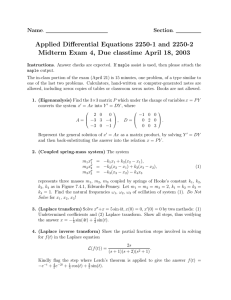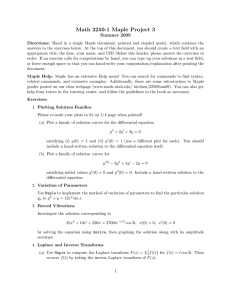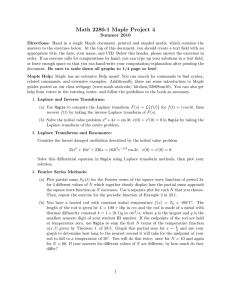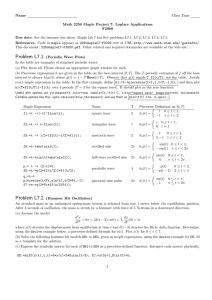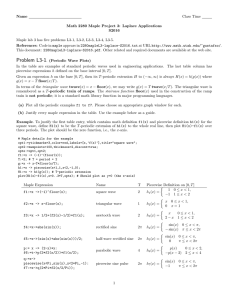Differential Equations 5410-1 Midterm Exam 4, Due classtime 27-Nov-2002 Name Scores
advertisement
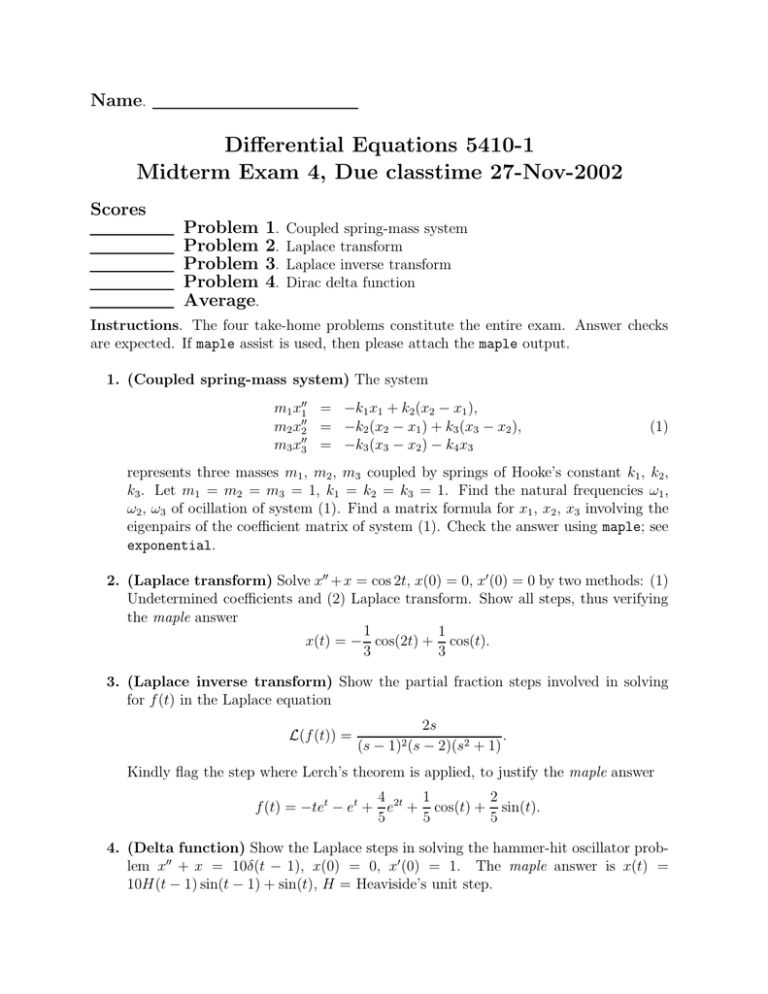
Name. Differential Equations 5410-1 Midterm Exam 4, Due classtime 27-Nov-2002 Scores Problem Problem Problem Problem Average. 1. 2. 3. 4. Coupled spring-mass system Laplace transform Laplace inverse transform Dirac delta function Instructions. The four take-home problems constitute the entire exam. Answer checks are expected. If maple assist is used, then please attach the maple output. 1. (Coupled spring-mass system) The system m1 x001 = −k1 x1 + k2 (x2 − x1 ), m2 x002 = −k2 (x2 − x1 ) + k3 (x3 − x2 ), m3 x003 = −k3 (x3 − x2 ) − k4 x3 (1) represents three masses m1 , m2 , m3 coupled by springs of Hooke’s constant k1 , k2 , k3 . Let m1 = m2 = m3 = 1, k1 = k2 = k3 = 1. Find the natural frequencies ω1 , ω2 , ω3 of ocillation of system (1). Find a matrix formula for x1 , x2 , x3 involving the eigenpairs of the coefficient matrix of system (1). Check the answer using maple; see exponential. 2. (Laplace transform) Solve x00 + x = cos 2t, x(0) = 0, x0 (0) = 0 by two methods: (1) Undetermined coefficients and (2) Laplace transform. Show all steps, thus verifying the maple answer 1 1 x(t) = − cos(2t) + cos(t). 3 3 3. (Laplace inverse transform) Show the partial fraction steps involved in solving for f (t) in the Laplace equation L(f (t)) = (s − 1)2 (s 2s . − 2)(s2 + 1) Kindly flag the step where Lerch’s theorem is applied, to justify the maple answer 4 1 2 f (t) = −tet − et + e2t + cos(t) + sin(t). 5 5 5 4. (Delta function) Show the Laplace steps in solving the hammer-hit oscillator problem x00 + x = 10δ(t − 1), x(0) = 0, x0 (0) = 1. The maple answer is x(t) = 10H(t − 1) sin(t − 1) + sin(t), H = Heaviside’s unit step.

